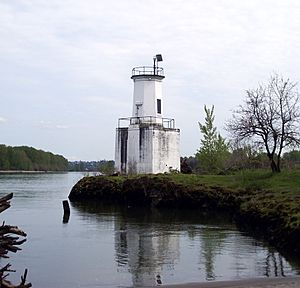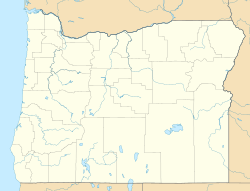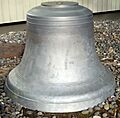Warrior Rock Light facts for kids
 |
|
| Warrior Rock Light in 2008 | |
|
|
|
| Location | Sauvie Island, Oregon, U.S. |
|---|---|
| Coordinates | 45°50′55″N 122°47′18″W / 45.84858°N 122.78835°W |
| Year first lit | 1877/1889/1930/1970s |
| Automated | 1930 |
| Deactivated | 1969-1970s |
| Foundation | sandstone |
| Construction | wood frame originally, concrete since 1930 |
| Tower shape | octagonal |
| Height | 25 feet (7.6 m) |
| Focal height | 20 feet (6.1 m) |
| Characteristic | Wht Fl 4s |
The Warrior Rock Light is a special lighthouse located on Sauvie Island in Oregon, USA. It helps guide boats and ships on the Columbia River near Portland, Oregon. This lighthouse once had the oldest fog bell in the Pacific Northwest. It is also Oregon's smallest lighthouse. It is one of the few lighthouses in Oregon that are not on the Pacific Ocean.
Contents
History of Warrior Rock Light
By 1877, boats needed help navigating near Sauvie Island. So, the United States Lighthouse Board put up two small red lights at Warrior Rock. These lights were on posts.
Building the First Lighthouse
In 1888, the U.S. Congress decided to build a proper lighthouse there. Carl W. Leick designed the building. It was built in 1889. The first lighthouse was a small wooden building. It sat on a base made of sandstone.
The lighthouse had living spaces below for the keeper. On top, it had an oil lamp beacon and a hand-cranked fog bell. The light warned ships about a rocky reef. This reef sticks out into the Columbia River. It is at the eastern tip of Sauvie Island.
The Old Fog Bell
The fog bell at Warrior Rock Light was very old. It was made in 1855 in Philadelphia. It was first used at the Cape Disappointment Light. That lighthouse is at the mouth of the Columbia River. But the ocean was too loud there. So, a louder bell replaced it in 1881.
The old bell then moved to the West Point Light in Seattle. But it was removed again in 1887 for a steam whistle. Finally, it found a home at Warrior Rock in 1889.
Life of a Lightkeeper
Lightkeepers used small boats called skiffs to reach the island. They would travel from St. Helens. During times of high water, the lighthouse itself could be surrounded by water. One lightkeeper in the 1920s even set up a cable. He used it to get from his living quarters to the lighthouse when the water was high.
Changes Over Time
In 1930, the wooden lighthouse was replaced. A new 28-foot (8.5 m) tall concrete tower was built. It was octagonal, meaning it had eight sides. This new tower stood on the original sandstone base. Around the same time, the light was changed to use electricity.
For a short time in 1937 and 1938, the site was used to measure water levels.
The 1969 Accident
On May 27, 1969, a large boat called a barge hit the lighthouse. This accident damaged the foundation. It also stopped the light and the bell from working. The Coast Guard was deciding whether to fix or replace the tower. During this time, the fog bell was taken out. But it fell into the river and cracked. This meant it could no longer be used.
Today, the cracked fog bell is outside the Columbia County Courthouse in St. Helens. Near it is a smaller copy of the first Warrior Rock Light. This replica is about one mile (1.6 km) north of the original site.
Visiting the Lighthouse Today
The Warrior Rock Light still works today. It has an automated light and bell. This means no lightkeeper is needed. You can visit the outside of the lighthouse. You can take a short boat ride from St. Helens. Or, you can hike about three miles (5 km) from the north end of Reeder Road.
Images for kids





